Avarakkai Poriyal | Avarakkai Recipe
Avarakkai poriyal recipe with step by step pics. Avarakkai poriyal is a dry dish made with flat beans, a few spices and coconut. It tastes great as a side dish with chapati or with rasam-rice or sambar-rice or kulambu-rice or dal-rice. A Vegan and no onion no garlic recipe.
Poriyal is a dry dish from the Tamil Nadu cuisine made with various vegetables. Poriyal is similar to a thoran (vegetable stir fry from Kerala cuisine) except that in a thoran the quantity of fresh coconut added is more as compared to that of poriyal. Onions are also added in a thoran.
There are many variations of making poriyal and even onions and garlic can be added. This avarakkai poriyal is a no onion no garlic recipe. I also cook this dish in coconut oil to give it an authentic touch. Although, you can also cook it in gingerly oil, sunflower oil or peanut oil.
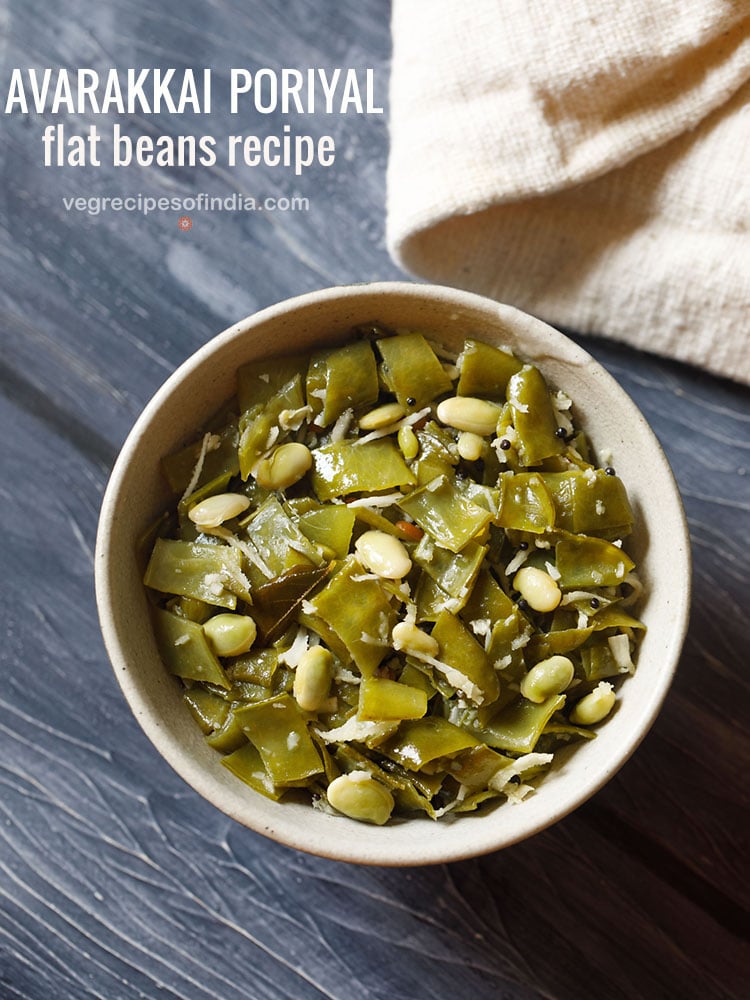
Poriyal are simple recipes to make but taste great as a side dish. I make both avarakkai poriyal as well as avarakkai thoran when these tasty beans are in season. Avarakkai poriyal can be served a side dish with chapatis as well as steamed rice accompanied with some sambar, rasam, kulambu or dal. Most of the times when I make rasam or kuzhambu, I also make poriyal.
Avarakkai is the Tamil name for flat beans, they are also known as field beans or broad beans in English. In other Indian languages, these are known as val papdi, valor, sem ki phalli. I have already posted a few recipes with flat beans earlier like Papdi bhaji and Surti papdi.
Some preparation is needed as you need to string the bean pods and this takes some time. But the cooking part of avarakkai poriyal is very easy.
To save time you can string the beans first and keep them in the fridge in a closed container. Next day then chop the beans and use them in the recipe.
In addition to the flat beans, the rest of the ingredients used in this poriyal are also easily available in any Indian home kitchen.
How to make Avarakkai Poriyal
1. Firstly rinse 200 grams avarakkai very well. Drain all the water. Then string each flat bean and pull the pods apart. Discard the strings.
You will have to open each pod to check if there is a worm or a mould in it. Discard the bean if it has a mould or worm in it.
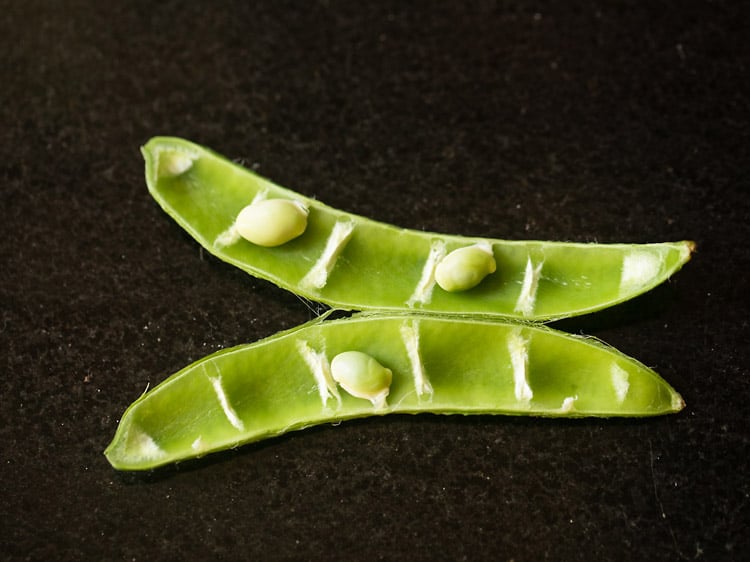
2. Then chop the beans. You can collect some of all the opened beans together and then chop them on a chopping board. You will need 2.5 cups of chopped avarakkai. Keep aside.
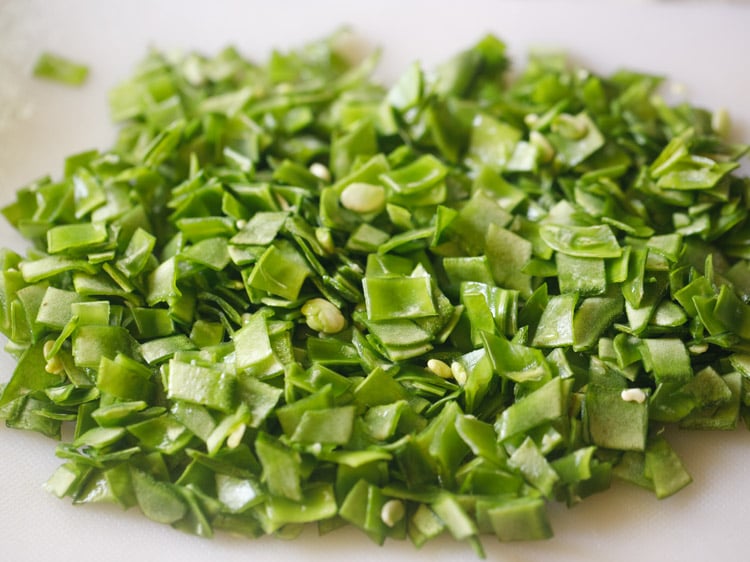
Tempering for avarakkai poriyal
3. In a pan or kadai, heat 2 tablespoons of coconut oil or gingelly oil or sunflower oil or peanut oil. Keep the heat to a low. Add ½ teaspoon mustard seeds.
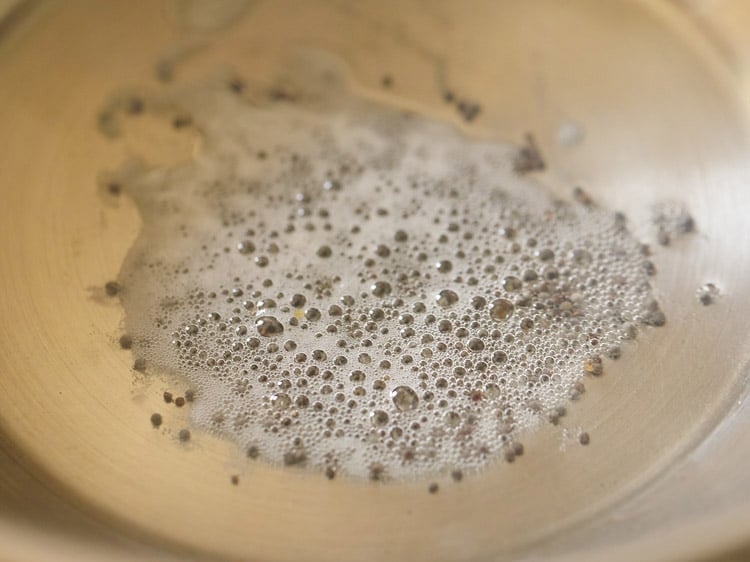
4. Let mustard seeds begin to crackle. When the mustard seeds begin to crackle and splutter, add ½ teaspoon urad dal.
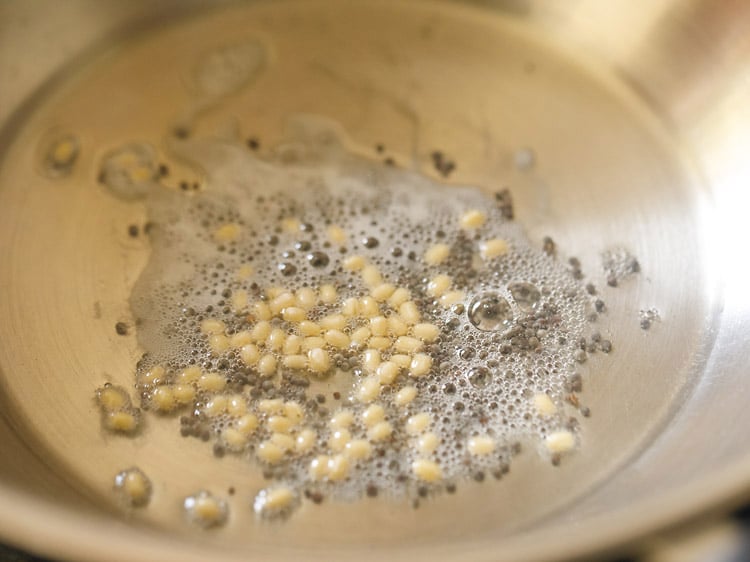
5. Stirring often fry urad dal on a low heat.
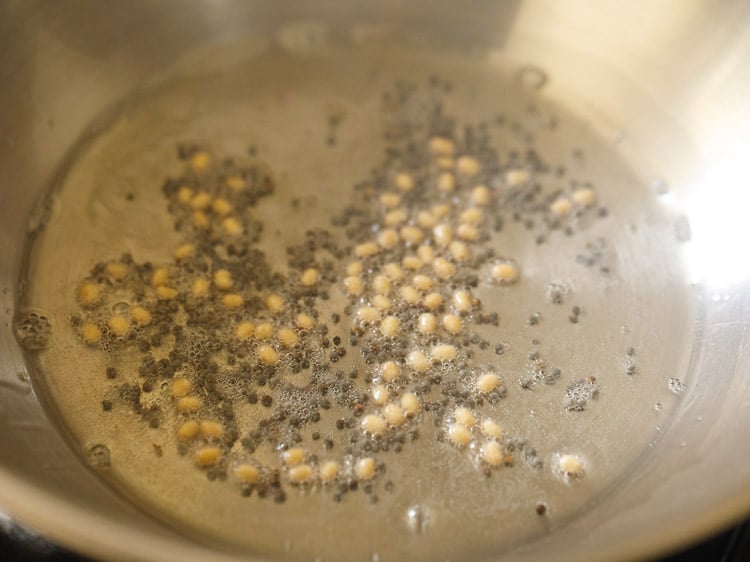
6. Fry till the urad dal turns golden.
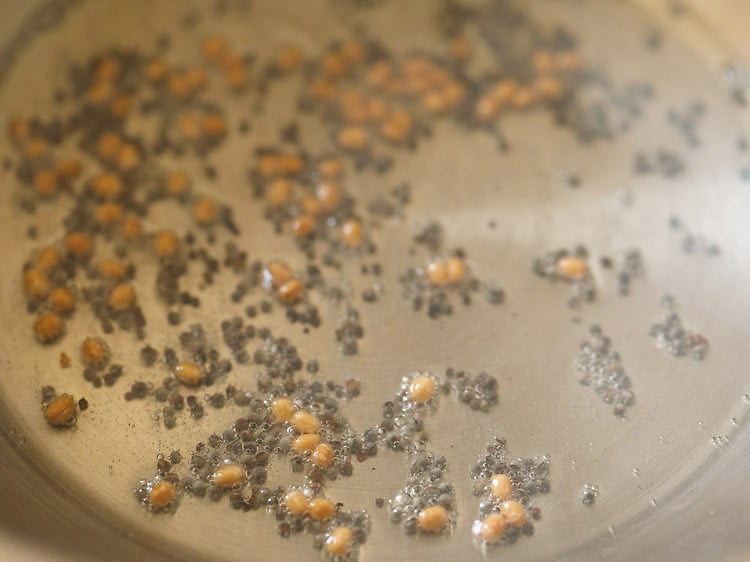
7. Then add 1 green chilli, chopped or 1 dry red chilli (broken and seeds removed) and 2 pinches asafoetida (hing).
If the pan becomes too hot, then you can switch off the heat.
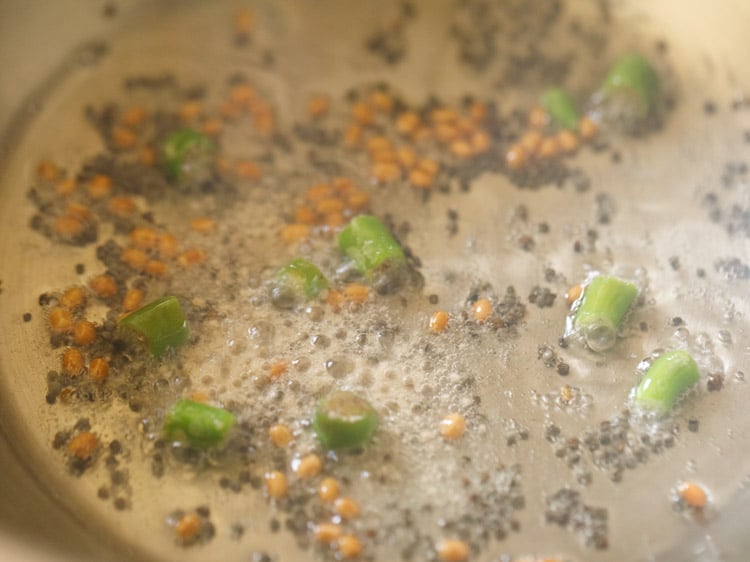
8. Quickly add 7 to 8 small to medium sized curry leaves (whole or chopped). Mix well. If using, red chillies then they should change color.
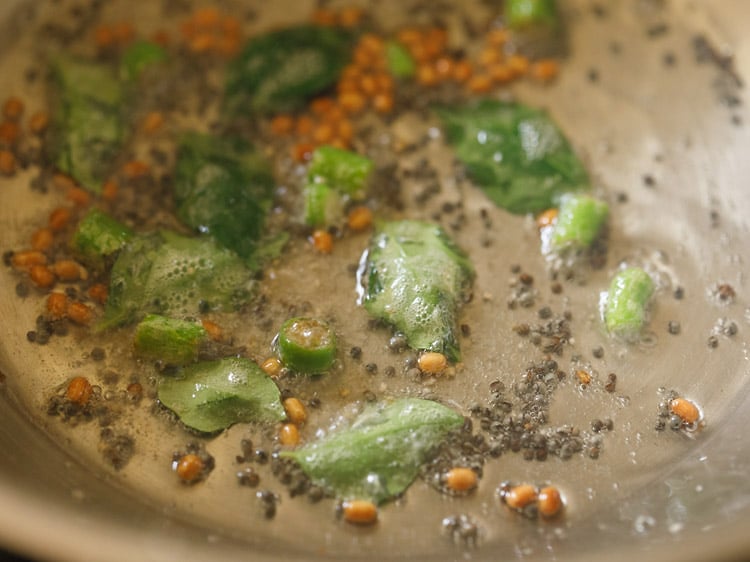
9. Now add the chopped avarakkai.
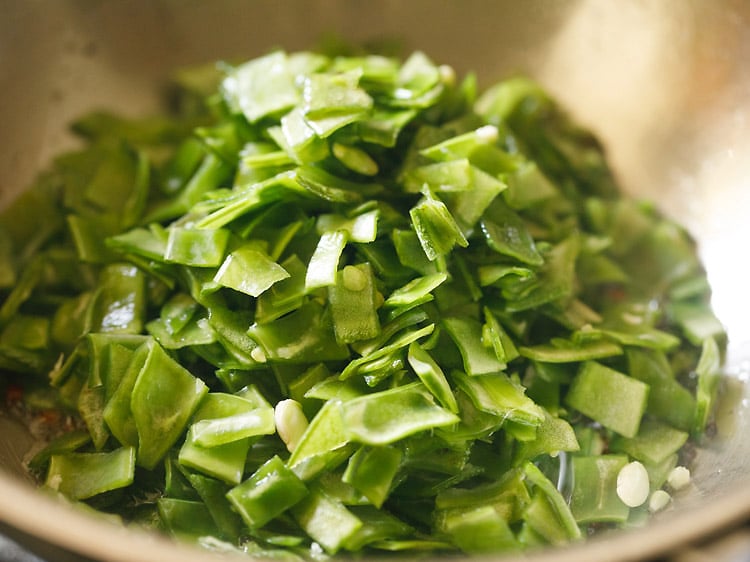
10. Add salt as per taste.
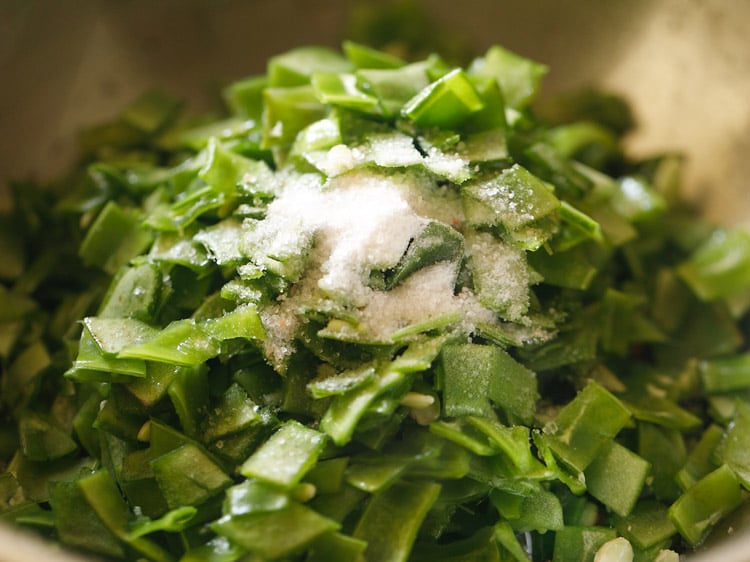
11. Mix very well.
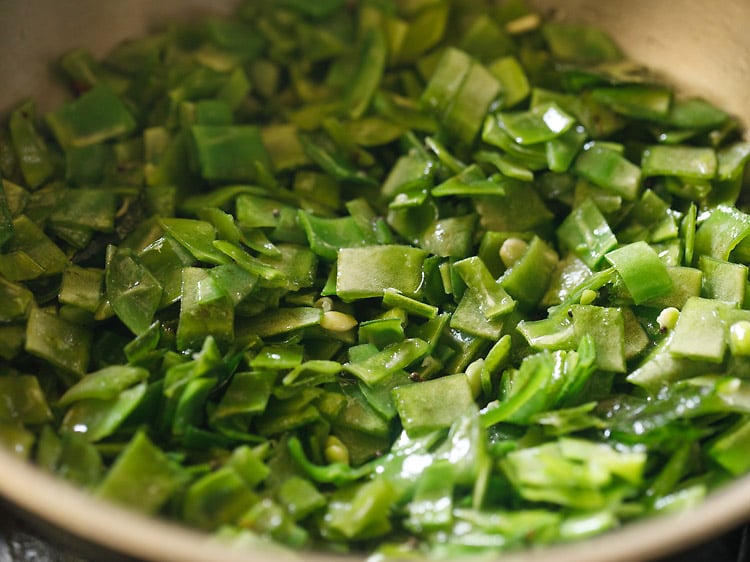
Making avarakkai poriyal
12. Add ½ cup water or add as required. Mix again well.
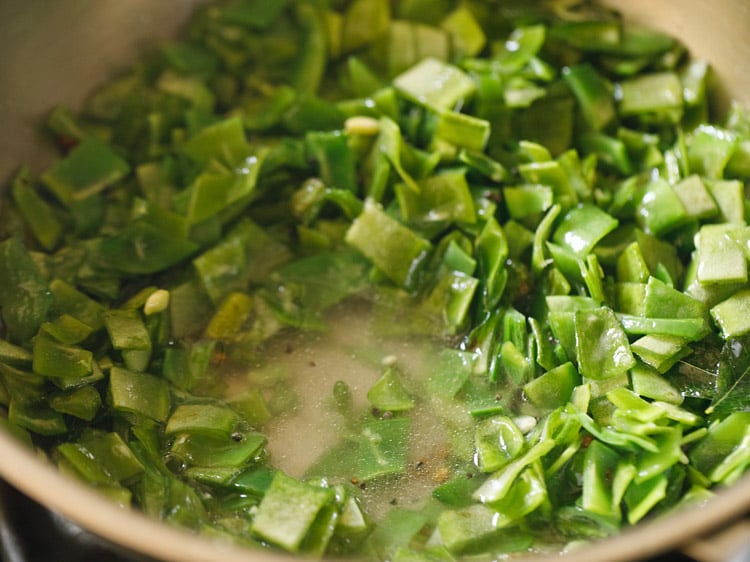
13. Cover the pan with a lid and on a low to medium-low heat cook the avarakkai.
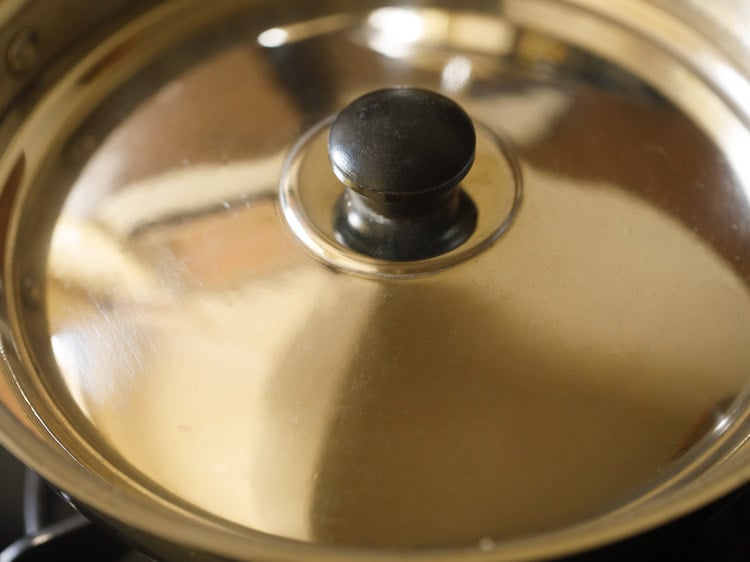
14. In between do stir and check if the water has not dried up. If the water is less or evaporated, you can add some more water. Stir and then continue to cover and cook.
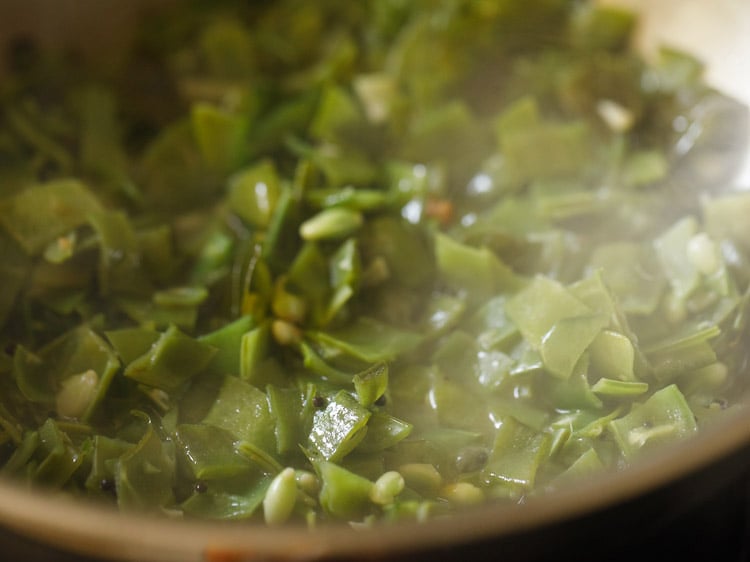
15. Cook till the avarakkai beans are tender and softened. Once the flat beans are well cooked, then there should be no water in the avarakkai poriyal before you start with the next step. So cook without lid till all the water dries up. Stir occasionally.
It will take approx a total of 20 to 22 minutes for the beans to cook on a medium-low flame. Cooking time will also vary with the quality of beans, type of pan used and intensity of the heat.
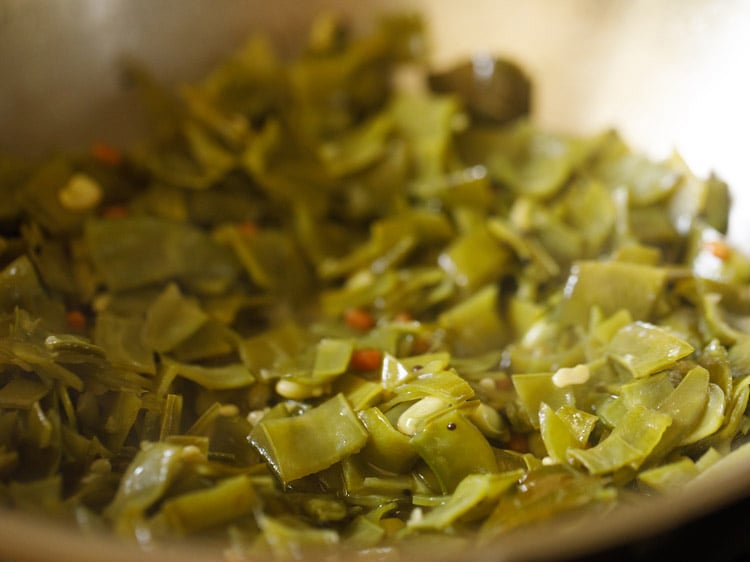
16. Then add 3 tablespoons coconut. You can also add 2 to 3 tablespoons of desiccated coconut flakes instead of fresh coconut. Frozen grated coconut can also be added.
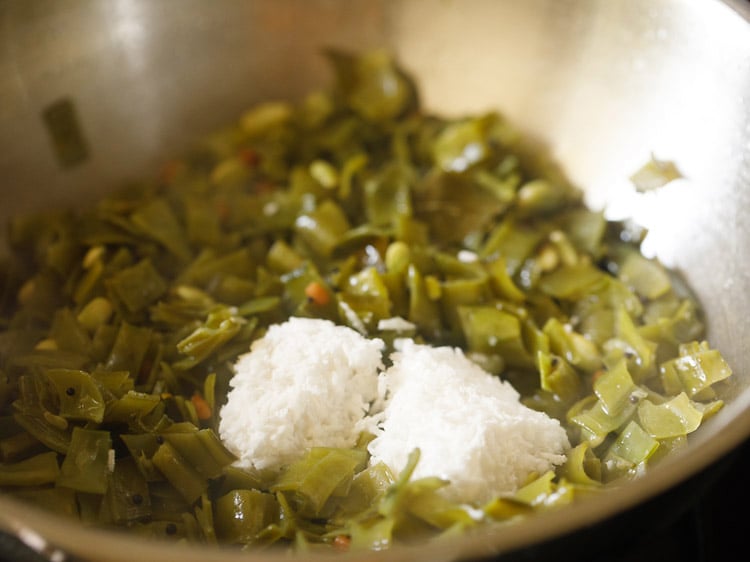
17. Mix very well and saute for a minute on low heat.
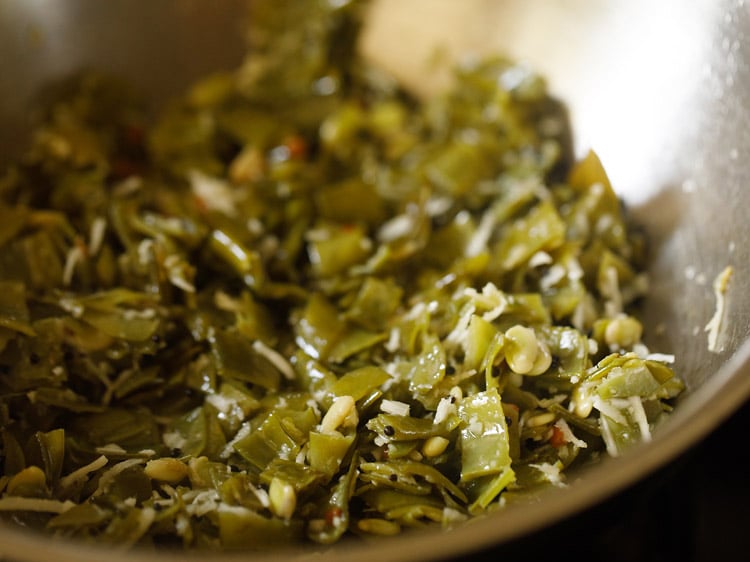
18. Serve avarakkai poriyal hot or warm as a side dish with chapatis or with sambar-rice, rasam-rice, kulambu-rice or dal-rice. While serving you can also garnish with some chopped coriander leaves.
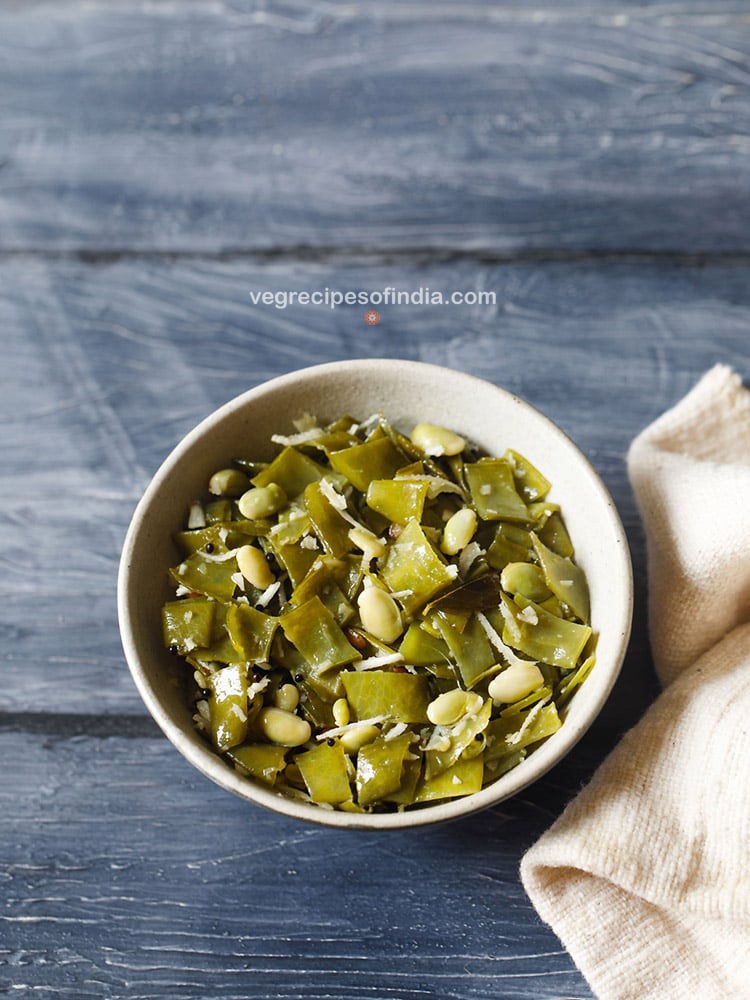
Some more tasty Poriyal recipes I have shared earlier are:
Step by Step Photo Guide Above
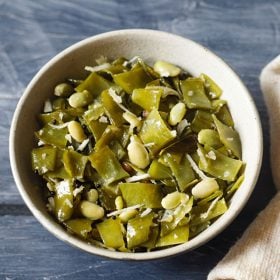
Ingredients
- 200 grams avarakkai or 2.5 cups chopped avarakkai (flat beans)
- 2 tablespoons coconut oil or gingelly oil or sunflower oil or peanut oil
- ½ teaspoon mustard seeds
- ½ teaspoon urad dal (husked and split black gram)
- 1 green chilli, chopped or 1 dry red chilli broken and seeds removed
- 2 pinches asafoetida or hing
- 7 to 8 small to medium sized curry leaves
- salt as required
- ½ cup water or add as required
- 3 tablespoons grated fresh coconut or desiccated coconut flakes.
Instructions
preparation
- Firstly rinse 200 grams avarakkai very well. Drain all the water. Then string each flat bean and pull the pods apart. Discard the strings.
- You will have to open each pod to check if there is a worm or a mould in it. Discard the bean if it has a mould or worm in it.
- Then chop the beans. You can collect some of all the opened beans together and then chop them on a chopping board. You will need 2.5 cups chopped avarakkai. Keep aside.
tempering for making avarakkai poriyal
- In a pan or kadai, heat 2 tablespoons coconut oil or gingelly oil or sunflower oil or peanut oil. Keep flame to a low. Add ½ teaspoon mustard seeds.
- Let mustard seeds begin to crackle.
- When the mustard seeds begin to crackle and splutter, add ½ teaspoon urad dal.
- Stirring often fry urad dal on a low flame. fry till the urad dal turns golden.
- Then add 1 green chilli, chopped or 1 dry red chilli (broken and seeds removed), 2 pinches asafoetida (hing) and 7 to 8 small to medium sized curry leaves (whole or chopped). If the pan becomes too hot, then you can switch off the flame.
- Mix well. If using red chillies then they should change color.
- Now add the chopped avarakkai. Add salt as per taste. Mix very well.
making avarakkai poriyal
- Add ½ cup water or add as required. Mix again well.
- Cover pan with a lid and on a low to medium-low flame cook the avarakkai.
- In between do stir and check if the water has not dried up. If the water dries up, you can add some more water. Then continue to cover and cook.
- On a low to medium-low flame, cover and cook the avarakkai beans for a total of about 20 to 22 minutes till they are tender and softened.
- Once the flat beans are well cooked, then there should be no water in the poriyal before you start with the next step. So cook without lid till all the water dries up. Stir occasionally.
- Then add 3 tablespoons coconut. You can also add 2 to 3 tablespoons of desiccated coconut flakes instead of fresh coconut. Frozen grated coconut can also be added.
- Mix very well and saute avarakkai poriyal for a minute on low flame.
- Serve avarakkai poriyal hot or warm as a side dish with chapatis or with sambar-rice, rasam-rice, kulambu-rice or dal-rice. While serving you can also garnish with some chopped coriander leaves.
Notes
- Instead of 1 green chilly, you can add 1 to 2 dry red chilli. Break the chillies and remove the seeds.
- Desiccated coconut flakes can be added instead of fresh coconut.
- Frozen grated coconut can also be added.
- Please do not skip on curry leaves, asafoetida, mustard seeds and urad dal.
- Avarakkai poriyal recipe can also be halved.
- If you prefer, you can even add 1 medium sized onion in the recipe. After the tempering, add the chopped onions. Saute the onions till translucent and then add the chopped beans.
Nutrition
This Avarakkai poriyal post from the blog archives, first published in February 2019 has been republished and updated on February 2023.

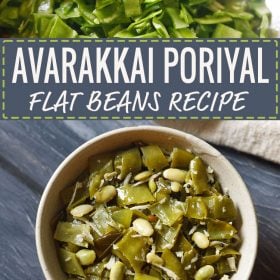
Thank you. I’d never cooked avarrakai before. I followed your recipe, and it came out very well. ?
Great and thanks for letting me know.
I tried this. It was delicious
Hi tried this poriyal today with rasam and rice.. it was very delicious. . I follow the same method for beans and carrot. Thank you
thanks chinmayee for sharing. i was hoping you will write back. so thanks for that. yes same method can be followed for various other vegetables too.